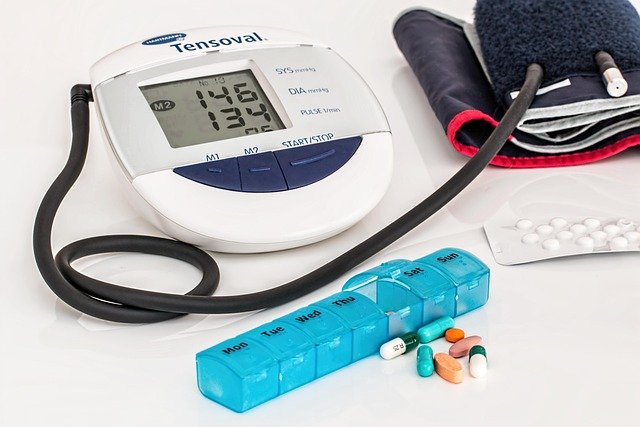Atrial fibrillation (AF) is an irregular heart rhythm that affects how efficiently the heart pumps blood and increases the risk of stroke and other complications. Treatment aims to reduce symptoms, lower stroke risk, and address underlying conditions. Management is individualized and can include medications, procedures, and lifestyle changes coordinated by a healthcare team experienced in heart rhythm disorders.
This article is for informational purposes only and should not be considered medical advice. Please consult a qualified healthcare professional for personalized guidance and treatment. Atrial fibrillation occurs when the heart’s upper chambers (atria) beat chaotically and out of sync with the lower chambers. Symptoms vary: some people feel palpitations, shortness of breath, or fatigue, while others have no noticeable signs. AF is often associated with age, high blood pressure, heart disease, thyroid disorders, and sleep apnea, but it can appear without an obvious cause. Identifying whether AF is paroxysmal (intermittent), persistent, or permanent helps guide treatment choices and follow-up.

Health: What are treatment goals?
Treatment goals for AF focus on three main areas: controlling the heart rate or rhythm to reduce symptoms, preventing blood clots to lower stroke risk, and managing contributing health issues that can worsen AF. Decisions are based on symptom burden, risk of stroke (often assessed with standardized scoring tools), and patient preferences. A comprehensive plan typically involves primary care clinicians and cardiac specialists; people should discuss options and monitoring needs with providers and local services to ensure coordinated care in your area.
Medical: What medical treatments exist?
Medical management commonly begins with rate-control drugs such as beta-blockers or non-dihydropyridine calcium channel blockers to keep heart rate within a safe range. When rhythm control is preferred, antiarrhythmic medications may be used to help restore and maintain a normal rhythm. Anticoagulation — using warfarin or direct oral anticoagulants (DOACs) — is frequently recommended for stroke prevention for patients with elevated risk. Medication choices consider interactions, kidney function, and bleeding risk; regular blood tests and follow-up appointments are often required.
Certain procedures are also part of the medical toolbox. Electrical cardioversion can rapidly restore a normal rhythm in selected patients. For ongoing rhythm control, catheter ablation is an option where targeted areas of heart tissue that trigger AF are modified using radiofrequency or cryotherapy. These procedures have benefits and risks that vary by patient, so discussion with an electrophysiologist and review of local services and outcomes in your area are important.
Nutrition: How does diet affect atrial fibrillation?
Dietary patterns can influence cardiovascular risk factors that contribute to AF. A heart-healthy eating pattern—rich in vegetables, fruits, whole grains, lean proteins, and healthy fats—can support blood pressure control, weight management, and overall heart function. Some people find that reducing caffeine, alcohol intake, or large carbohydrate-heavy meals decreases palpitations; however, responses vary. For patients on anticoagulants, maintaining consistent vitamin K intake is important if using warfarin, and any major dietary changes should be discussed with a clinician to avoid medication interactions.
Nutrition advice should be tailored to individual needs, including concurrent conditions like diabetes or kidney disease. Working with a registered dietitian familiar with cardiac nutrition can provide personalized guidance and meal planning that supports both heart health and symptom management.
Lifestyle: Which lifestyle changes help manage AF?
Lifestyle measures are frequently recommended alongside medical care. Regular moderate physical activity, smoking cessation, and weight management can reduce AF burden and improve cardiovascular health. Treating sleep apnea with appropriate therapies can lower AF recurrence in many patients. Limiting heavy alcohol use and managing stress can also reduce episodes for some individuals. Effective self-management includes keeping blood pressure, cholesterol, and blood sugar within target ranges and attending scheduled follow-up appointments.
When making lifestyle changes, set realistic, sustainable goals and coordinate with healthcare providers and local services—such as cardiac rehabilitation programs or sleep clinics—in your area for structured support. Small, consistent changes often yield more durable benefits than abrupt, extreme shifts.
Conclusion
Atrial fibrillation treatment combines symptom control, stroke prevention, and management of contributing conditions through medications, procedures, nutrition, and lifestyle adjustments. Choices are individualized based on symptom severity, stroke risk, and personal preferences, and they often involve a multidisciplinary team. Discussing options with qualified clinicians and exploring local services for diagnostics, follow-up, and support helps ensure a tailored and safe plan for long-term heart health.




